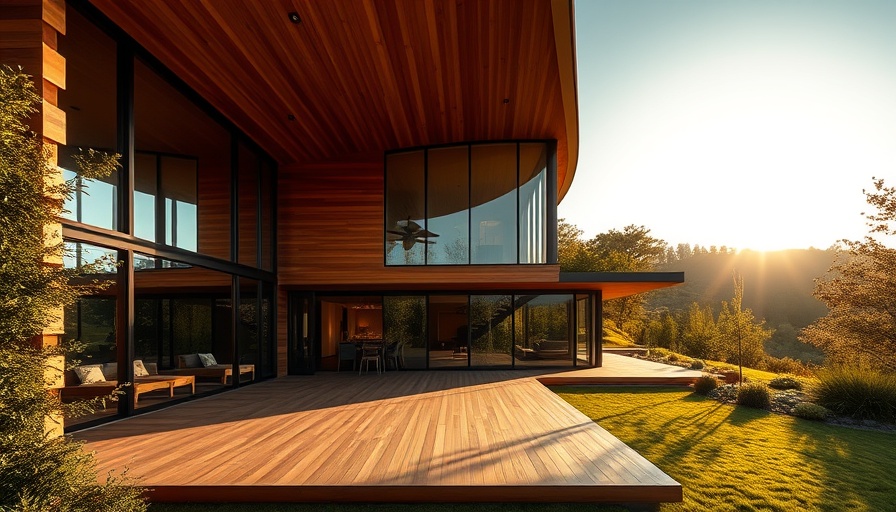
Exploring the Future of Remote Work: Hazelmead Co-Housing Scheme
In the age of remote work, finding effective and comfortable working spaces is crucial for digital nomads. The recent completion of the UK's largest co-housing scheme in Dorset by Barefoot Architects, named Hazelmead, presents an inspiring model for how communal living can facilitate productivity while providing a holistic living environment.
A Harmonious Blend of Community and Workspace
Hazelmead showcases an innovative design that integrates personal living areas with communal spaces such as co-working zones and leisure areas. This thoughtful arrangement allows residents to connect with peers while enjoying the quiet necessary for focused work. An effective workspace should not just be an isolated desk; it should encourage collaboration and community, which Hazelmead exemplifies.
The Importance of Ergonomic Design in Collective Spaces
In designing workspaces within co-housing arrangements, it's essential to apply ergonomic standards to foster not only comfort but also efficiency. According to research, ergonomic design can significantly boost productivity by reducing discomfort and fatigue. Hazelmead features adjustable workstations, smart lighting, and ample natural light, all of which contribute to a healthier workspace. For digital nomads, creating an ergonomic home office setup, whether in a private room or a shared area, is integral to maintaining wellness and focus.
Adapting Remote Work to Communal Living
For many digital nomads, the shift to co-housing might represent a departure from solitude to communal living. This change requires adaptability and an open mind. It’s important to consider how to carve out personal space in a shared environment. By integrating flexible furniture and designated quiet zones, co-housing models like Hazelmead allow individuals to maintain their routine while enjoying the benefits of community.
Environmental and Social Sustainability in Co-Housing
Another critical aspect of Hazelmead is its commitment to sustainability. The architects prioritized eco-friendly materials and energy-efficient systems, making this scheme not only beneficial for its residents but also for the environment. Such sustainability practices can enhance well-being by providing a healthy living space for its residents while promoting responsible consumption—an inspiring example for digital nomads considering their physical and environmental footprints.
Networking Opportunities: Building Community While You Work
The communal living arrangement in co-housing can open doors to new networking opportunities. Digital nomads can benefit from being surrounded by like-minded individuals, leading to collaborative projects and friendships. Building a professional network is vital for career advancement, and living in a community promotes relationships that can lead to exciting job prospects or business partnerships.
Final Thoughts: Embracing Change in the Work Environment
As remote work becomes increasingly common, the concept of co-housing could redefine how we perceive workspaces. Hazelmead serves as a powerful example of how well thought-out communal living spaces can enhance productivity, support wellness, and foster social connections. For digital nomads, exploring such innovative living arrangements may significantly enhance their work-life balance.
Consider how co-housing could fit into your lifestyle. Embracing the evolution of work environments may lead to a more fulfilling and productive remote experience.
 Add Row
Add Row  Add
Add 




Write A Comment